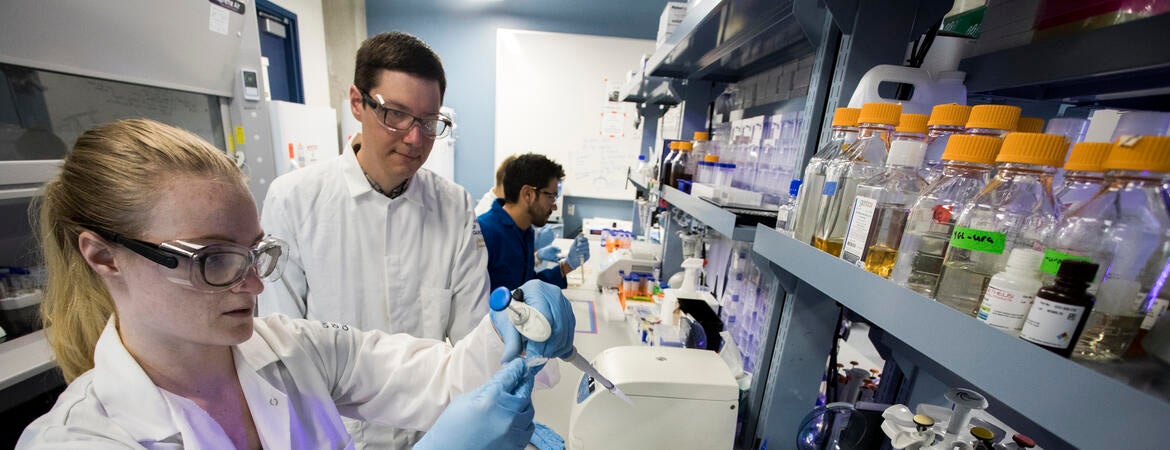
Assistant Professor Justin Chartron has been awarded a grant from the National Science Foundation to develop a new approach to sustainable biomanufacturing. The $350,000 award will fund a three-year project in collaboration with Dr. Tom Ellis, Professor of Synthetic Genome Engineering at Imperial College London. The UK team will be funded by a parallel £441,000 award from the Engineering and Physical Sciences Research Council. Together, Dr. Chartron and Dr. Ellis will create Grown Engineered Materials (GEMs). Inspired by natural composite materials, like wood, GEMs will be produced by living microorganisms—co-cultures of bacteria and yeast—and self-assemble into their final forms.
Co-cultures of bacteria and yeast have been used for centuries to produce traditional foods, like kombucha, kefir, certain beers, and sourdough bread. Each kind of microorganism in the consortia breaks down sugars that the other kinds cannot. Each microorganism also specializes in making different products. Bacteria produce acids that give products tartness; yeast produces ethanol and carbon dioxide. To create GEMs, Dr. Chartron and Dr. Ellis will augment the symbiotic relationships by giving bacteria the ability to produce nanocellulose, and yeast the ability to produce elastin-like polypeptides (ELPs). ELPs are special proteins with an unusual property: they solidify when heated. Unlike traditional materials, engineers can encode the precise structure of ELPs into the DNA of the yeast genome. By subtly changing the ELP, Dr. Chartron and Dr. Ellis hope that their initial GEM will offer a platform to develop wide-ranging responsive materials.
Dr. Ellis' group will design different versions of the ELP-encoding DNA, which can be difficult to synthesize. Dr. Chartron's group will address the other major challenge in creating the GEM: engineering yeast to produce enough of the ELP protein. Protein synthesis can be extremely taxing on an organism. In humans, for instance, pancreatic cells sometimes overproduce insulin, especially if a person becomes resistant to the hormone. The insulin swamps the cells biosynthetic machinery, clogs up cellular secretion, and ultimately kills the cell. This series of events is one way that Type II Diabetes develops.
Dr. Chartron's group studies how challenging proteins, like ELPs, places a similar burden on yeast cells. They use systems biology approaches, like high-throughput RNA sequencing and computational modeling, to identify the biosynthetic pathways stressed by ELP production. These pathways become targets for strain engineering. Dr. Chartron's group develops new ways to control how the yeast behaves. Like a well-tuned assembly line, Dr. Chartron's yeasts will be optimized to produce ELPs.
Altogether, the grants to Dr. Chartron and Dr. Ellis begin open a pathway to exciting new biomaterials, which offer sustainable alternatives for filtration, textiles, and advanced composites. With the ease of experimentation offered by synthetic biology, GEMs may even yield entirely new sectors of their own, such as sensing and responsive materials.